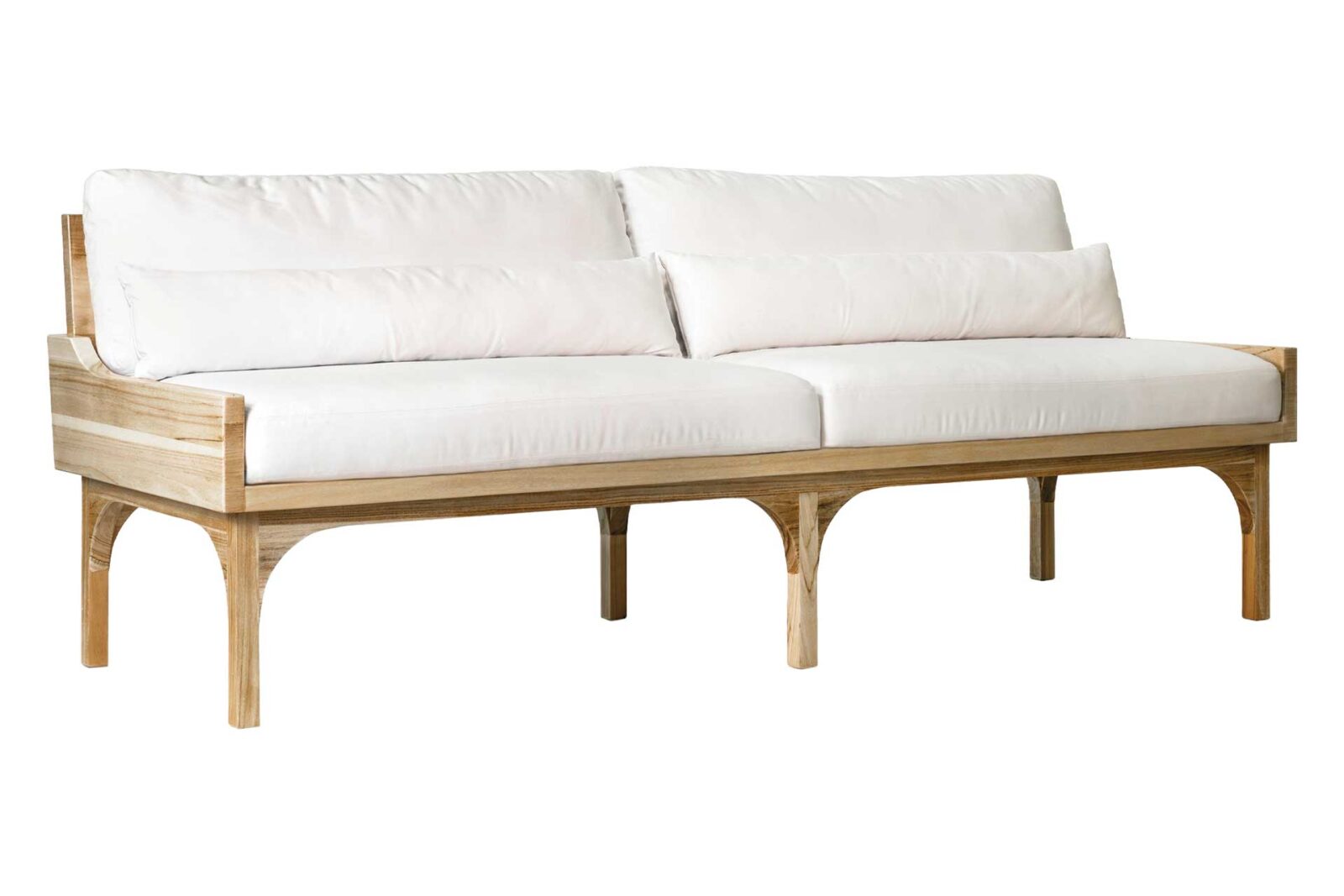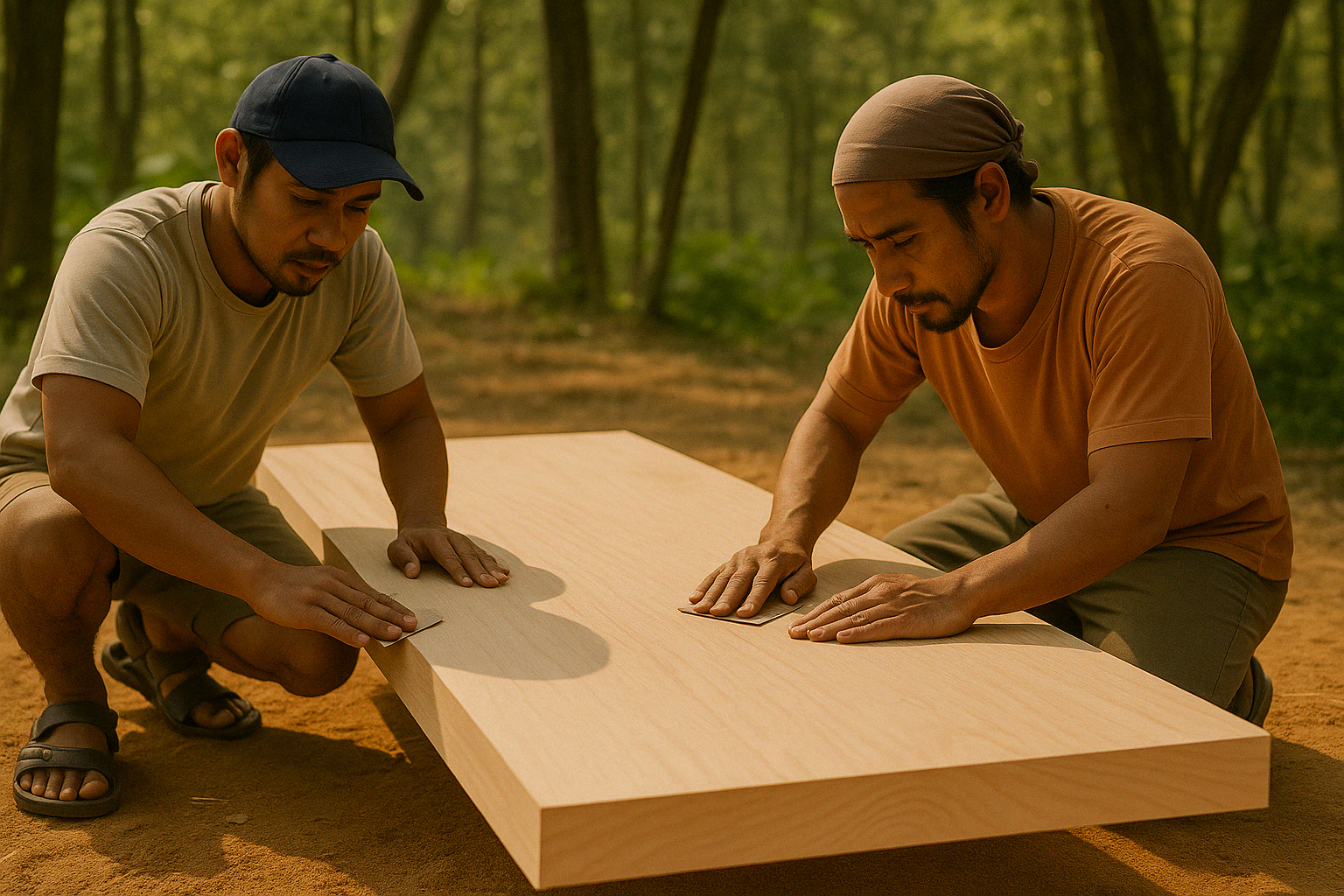The Silent Collaboration of Cultures
When you run your hand along the sun-bleached grain of a Serenique console or trace the delicate joinery of a teak bench, you might not immediately recognize the layered story that lives within. But woven into the very fibers of each handcrafted piece is a narrative of unexpected fusion: an age-old dialogue between East and West. This journal is an invitation to step into that silent collaboration, to discover how Dutch design principles subtly altered Indonesian woodworking—and how those echoes are now being refined and reimagined in the serene poise of the Serenique collection.

Section One: A Tale of Two Craft Legacies
To understand the beauty and tension in the Serenique collection, we must begin centuries ago—in the dense jungles of Java and the canals of Amsterdam.
The Dutch colonization of Indonesia, beginning in the early 17th century, wasn’t just a geopolitical or economic force. It was also an aesthetic one. Dutch merchants, craftsmen, and settlers brought with them a preference for clean lines, restrained ornamentation, and an almost Protestant humility in design. Their legacy? A distillation of European formality paired with tropical adaptation.

Indonesian woodworking, by contrast, was rooted in lavish spiritual symbology and botanical forms. Javanese craftsmen carved flowing vines, mythical beasts, and ornate temple-style reliefs into teak and mahogany—every piece a conduit for ancestral wisdom.

When these two worlds met, something quietly profound happened: a new design dialect was born. Dutch minimalism softened into tropical pragmatism; Indonesian flourish gained a skeletal structure. In the private studios of colonial Batavia and the workshops of Jepara, East and West learned to cohabitate not through conquest, but through craft.
The Mechanics of Blending Techniques
The fusion wasn’t just stylistic. It was deeply mechanical.
Traditional Javanese wood joinery relies on interlocking systems that require neither nails nor glue—a marvel of pre-industrial ingenuity. Dutch furniture makers, familiar with doweling, mortise-and-tenon, and cabinetry square-logic, brought a new dimension to these joints. The result? A hybrid construction approach that was both elegant and enduring.
This mechanical fluency lives on in every Serenique chaise and cabinet. Even in our cleanest silhouettes, the spiritual DNA of Javanese joinery is preserved. A barely visible tenon. A drawer glide that whispers shut. A leg angled not by CAD, but by human intuition passed down from a teacher to an apprentice. These are not just artifacts of old-world knowledge. They are a living language of care.
Dutch Influence Refracted Through a Modern Lens
Fast forward to today. The Serenique collection is not a revivalist effort, nor is it trapped in the amber of nostalgia. Rather, it is a prism—refracting this hybrid past into a spa-like future.
The crisp vertical slats of a Serenique Sofa owe its lineage to Dutch armoires. The gently pitched seatbacks maintain a posture of quiet strength, reflective of traditional Javanese thrones once made for sultans. The bleached tones and absence of overt carving speak to restraint, while the softening of silhouettes and the blurred boundary between cushion and structure speak to warmth.

Designers today are free to cherry-pick from this long lineage. But we don’t simply curate—we translate. With Serenique, every line, every seam, every finish is a sentence in that translation.
A Narrative of Ethics and Intention
This story of East-West design is more than aesthetic. It’s ethical.
At Seasonal Living, we approach this inherited legacy with reverence and responsibility. We work directly with Indonesian craftspeople, many of whom are descended from the very lineages that shaped this unique design dialect. In partnering with these artisans, we ensure that skills remain in the communities where they originated—and that the economic benefits of their heritage stay rooted, not exported.
We source plantation-grown Indonesian teak, certified for sustainability. We design with grain congruency in mind—ensuring each cut, each join, and each surface plane flows with the wood’s natural direction and patterning. Achieving this requires a high level of skill during the selection and matching process. It demands that artisans orient each board with intentionality, sometimes setting aside large portions of wood to ensure that visible surfaces harmonize in tone, figure, and texture.

This is not just about discipline—it’s about what happens to the eye. When the grain alignment is seamless, the viewer experiences a visual tranquility. The piece reads as a unified whole, not a sum of its parts. There is no jarring interruption, no unconscious tension. It is calming, grounding, and sensorially refined.
Creating the bleached wheat finish is a study in patience and precision. Each piece of teak must be meticulously hand-sanded over countless hours until the surface is buttery smooth, free from any ridges or tear-out—a task made especially difficult by teak’s dense structure and naturally oily composition. Once sanded, a protective base coating is applied, not as an aesthetic layer, but as a stabilizer to prepare the wood for exposure.

Then begins the alchemical dance with the sun. In controlled open-air conditions, the pieces are placed under the intense heat of the Indonesian and Japanese sun, where exposure over many days or even weeks gradually draws out the color, softens the red-brown hues, and bleaches the surface to its signature shade. This is not easily achieved. Teak is famously resistant to weathering and stubborn to lighten due to its natural oils—making this process one of the most labor-intensive and time-sensitive steps in the Serenique manufacturing journey.
We minimize high-gloss treatments in favor of subtle, low-sheen finishes that allow the wood’s inherent beauty to emerge naturally. And we do all of this not to mimic the past, but to create something wholly current—a collection that understands where it came from and chooses, with humility, where it wishes to go.
Emotional Resonance Through Craft
Walk through a Serenique space, and something happens.
You feel a centering. A settling. That is not accidental. The geometry, the tactility, the scent of teak warmed by sunlight—it all contributes to a kind of aesthetic parasympathetic response. We breathe slower. We listen better.
This is the emotional residue of blended craft legacies. The discipline of Dutch design tempers distraction. The poetry of Javanese woodworking invites rest. Together, they create not just furniture, but environment. This is why Serenique is equally at home in a modern spa in Tulum or a coastal retreat in Big Sur. It is quietly global, and profoundly local.
Conclusion: The Continuum of Craft
To call Serenique a collection is almost misleading. It is not a set of items. It is a gesture—a modern bow to the enduring wisdom of craft.
In every beveled edge and softened joint is a story that spans oceans and centuries. As designers, homeowners, or architects, we are simply the next interpreters of this ongoing dialogue. And as you invite Serenique into your space, know that you are not just placing an object. You are welcoming a convergence of history, ethics, and form—a Serenique spirit.
UNTIL NEXT TIME…
Design is more than aesthetics — its a seamless continuum that connects the way we live, work, and gather. Explore new perspectives, timeless craftsmanship, and inspired living with us!
Stay connected to the Seasonal Living Design Continuum Journal. Subscribe today to receive our latest journal entries!